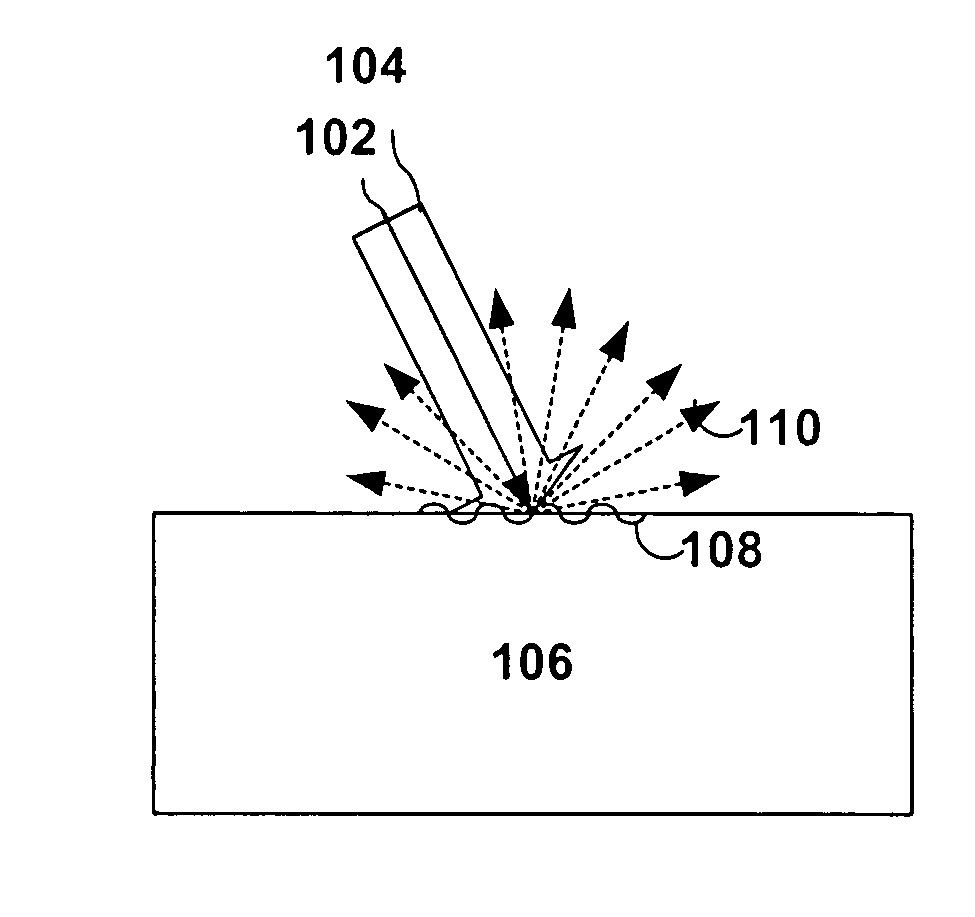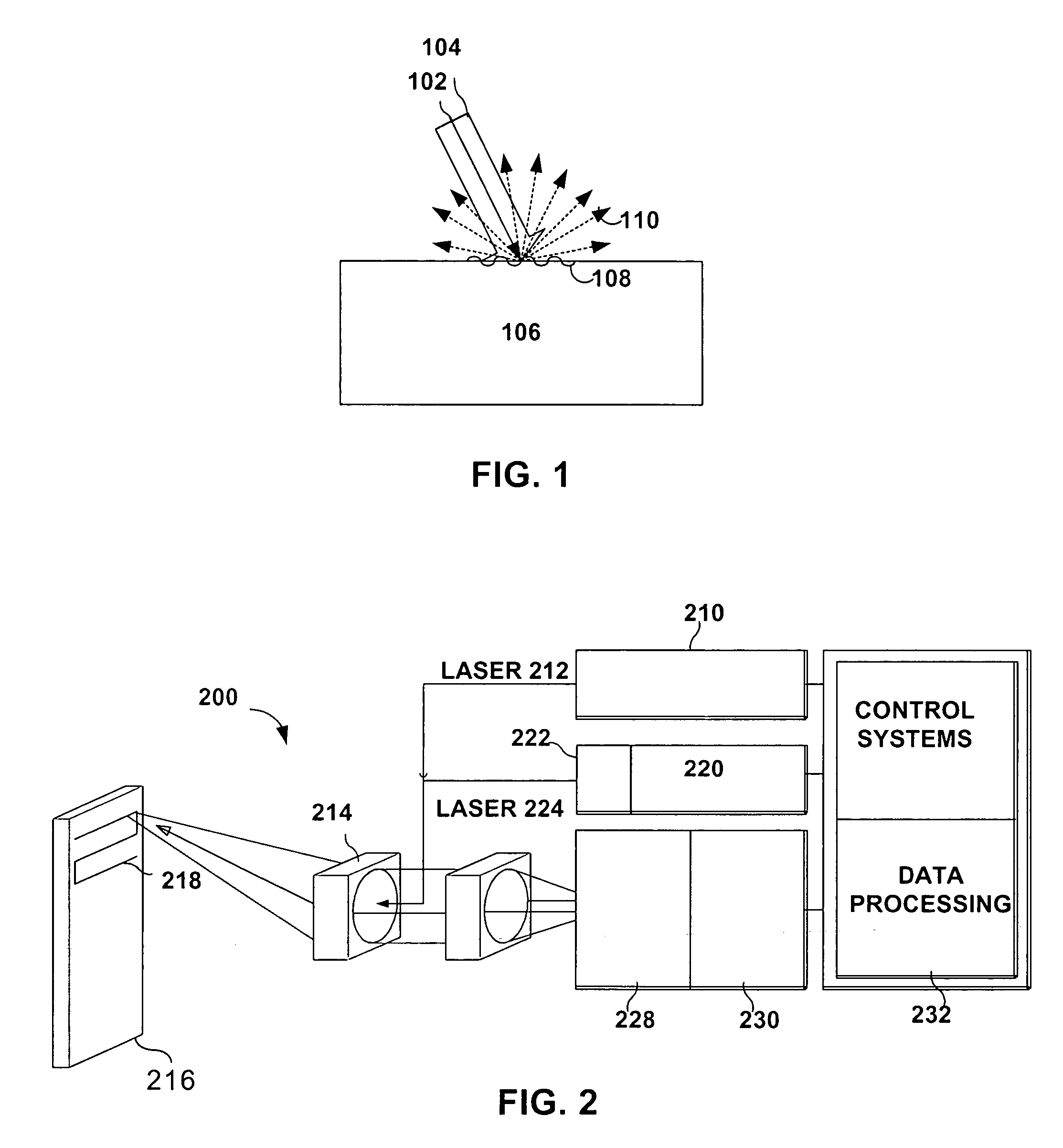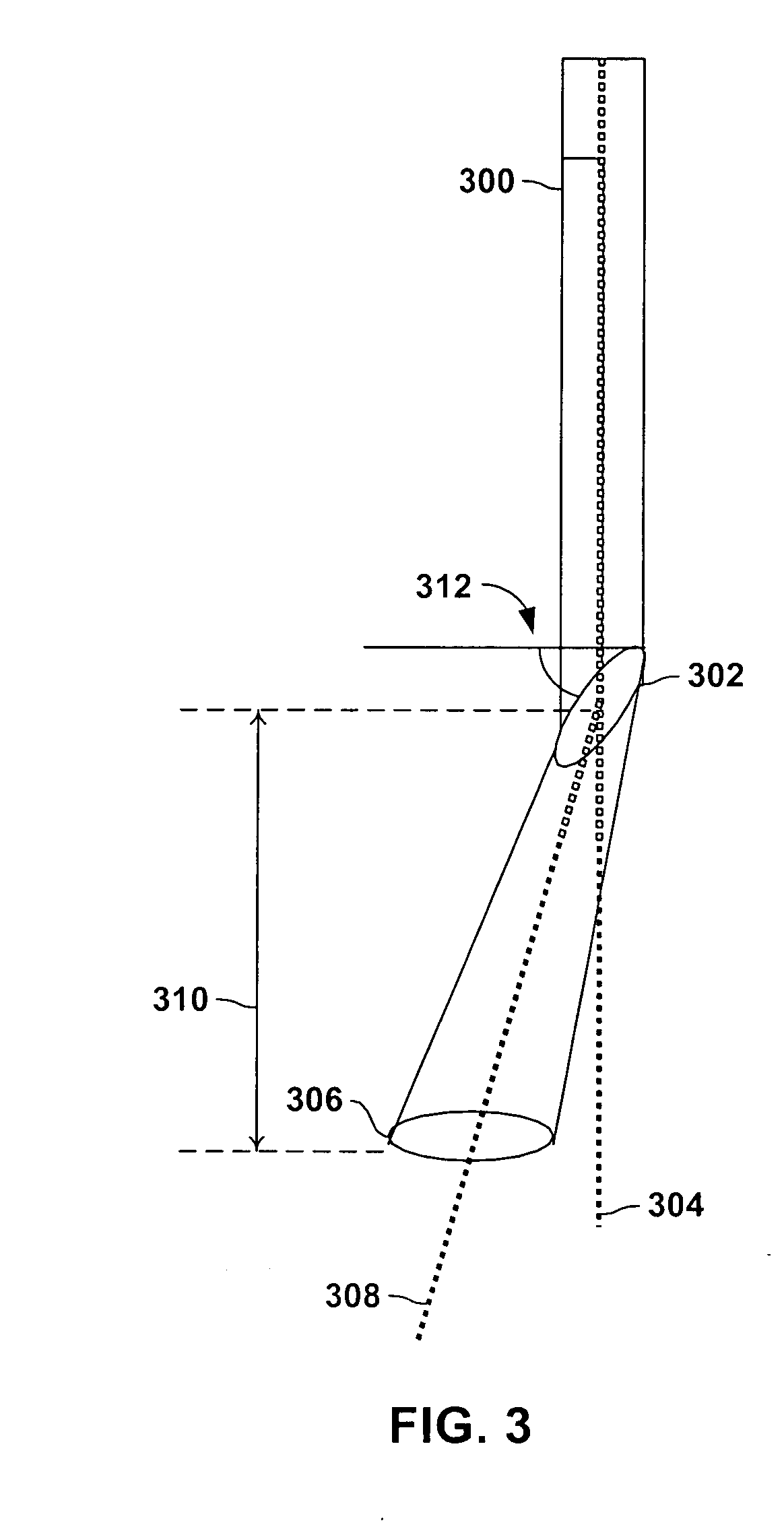System and method to decrease probe size for improved laser ultrasound detection
a laser ultrasound and probe technology, applied in the field can solve the problems of adversely increasing the manufacturing cost associated with composite structures, requiring strict quality control procedures in the manufacturing process, and reducing so as to achieve the effect of increasing the efficiency of ultrasound generation and detection, and being easy to us
- Summary
- Abstract
- Description
- Claims
- Application Information
AI Technical Summary
Benefits of technology
Problems solved by technology
Method used
Image
Examples
Embodiment Construction
[0026] Embodiments of the present invention are illustrated in the FIGs, like numerals being used for like and corresponding parts of the various drawings.
[0027] The present invention provides the ability to use the same optics for generation, detection and collection of laser light associated with a laser ultrasound inspection system. No additional optics is required by terminating the optical fibers at pre-determined angles so that the field of view or optical spots of each optical fiber overlap. The elimination of additional optics can reduce the size and complexity of the laser ultrasound probe while increasing it's the probes flexibility and versatility. Additionally, because the generation, collection and detection optical field overlap the overall efficiency for ultrasound generation and detection is increased.
[0028]FIG. 1 depicts two incoming laser beams that generate and detect laser ultrasonic displacements. Laser beam 102 generates ultrasound while illumination laser be...
PUM
 Login to View More
Login to View More Abstract
Description
Claims
Application Information
 Login to View More
Login to View More - R&D
- Intellectual Property
- Life Sciences
- Materials
- Tech Scout
- Unparalleled Data Quality
- Higher Quality Content
- 60% Fewer Hallucinations
Browse by: Latest US Patents, China's latest patents, Technical Efficacy Thesaurus, Application Domain, Technology Topic, Popular Technical Reports.
© 2025 PatSnap. All rights reserved.Legal|Privacy policy|Modern Slavery Act Transparency Statement|Sitemap|About US| Contact US: help@patsnap.com



